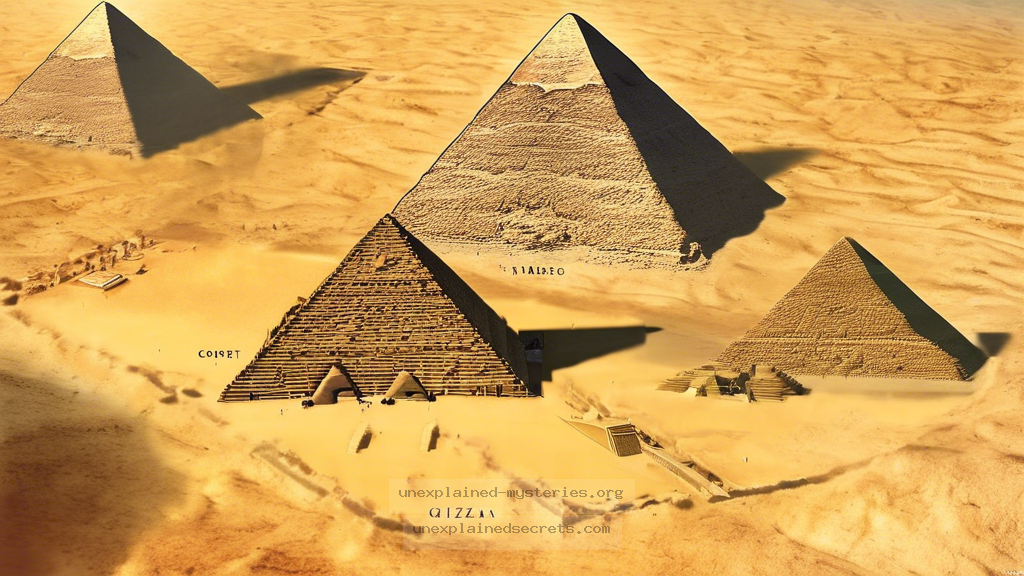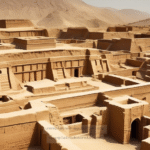What Secrets Lie Beneath the Pyramids of Giza? Unexplained Mysteries of Ancient Egypt
What Secrets Lie Beneath the Pyramids of Giza? Unexplained Mysteries of Ancient Egypt
The Great Pyramids of Giza have long captivated the human imagination. Standing as monuments to the ingenuity of ancient Egyptian civilization, they are not just tombs for pharaohs but also repositories of mysteries that have perplexed historians and archaeologists for centuries. What secrets lie beneath these monumental structures? Why do some researchers believe there are hidden chambers and advanced technologies yet to be discovered? This post delves into the unexplained mysteries surrounding the Pyramids of Giza, revealing the enigma that still surrounds these ancient wonders.
Historical Context of the Pyramids
The Pyramids of Giza, particularly the Great Pyramid built for Pharaoh Khufu, date back to around 2580–2560 BC. The construction of these pyramids showcases the architectural brilliance and organizational skills of ancient Egypt. Built using millions of limestone blocks, the Great Pyramid originally stood at 146.6 meters tall and was the tallest man-made structure for over 3,800 years. The precision with which these structures were built raises questions about the techniques and tools utilized by the ancient Egyptians. How did they transport such massive stones across the desert? What kind of labor force was needed to achieve this monumental feat?
Theories of Hidden Chambers
One of the most intriguing theories surrounding the Pyramids of Giza is the existence of hidden chambers within the structures. In 2015, a significant discovery was made when a team of researchers using advanced scanning technology identified a void within the Great Pyramid. This void, measuring around 30 meters in length, has yet to be fully explored. Theories abound regarding its purpose—some suggest it could be an additional burial chamber, while others speculate it may have been used for structural support or even as a passageway for the pharaoh’s spirit.
Advanced Technology or Lost Knowledge?
One of the most controversial aspects of the Pyramids is the debate over the technology available to the ancient Egyptians. Some scholars argue that the precision with which the pyramids were constructed suggests a level of knowledge that has been lost to history. The alignment of the pyramids with the stars and cardinal points indicates an understanding of astronomy that many believe was advanced for their time. How did they achieve such accuracy without modern tools? Various theories suggest that ancient Egyptians may have utilized sophisticated tools or methods, such as shadow measurements or the use of water levels, but definitive evidence remains elusive.
Archaeological Discoveries and Their Significance
Over the years, many archaeological discoveries have been made around the Pyramids of Giza that contribute to understanding their construction and purpose. From the discovery of workers’ villages to burial sites of sacrificial animals, each find adds a piece to the puzzle. For instance, the discovery of the “Workers’ Tombs” near the pyramids sheds light on the lives of those who built these structures. Contrary to the popular belief that the pyramids were constructed by slaves, evidence suggests that a skilled workforce was employed, who received meals and care in return for their labor.
Alternative Perspectives on the Pyramids’ Purpose
While mainstream archaeology views the pyramids primarily as tombs, alternative theories propose that they served other purposes. Some researchers argue that the pyramids may have been used for astronomical observations or as energy sources. The pyramids’ alignment with the stars and the sun could indicate they were designed to harness cosmic energy. These theories, while often marginalized by traditional scholars, continue to attract interest and debate.
Common Misconceptions About the Pyramids
Many misconceptions about the Pyramids of Giza persist, often fueled by popular media and folklore. One common myth is that the pyramids were built by slaves. In reality, evidence suggests that skilled laborers, who were well-fed and housed, performed the work. Another misconception is that the pyramids were constructed using ramps alone; recent studies have proposed that a combination of methods, including levers and counterweights, may have been employed. Clarifying these misconceptions is crucial for understanding the true historical context of the pyramids.
Best Practices for Investigating Ancient Mysteries
For those interested in investigating the mysteries of the Pyramids of Giza, several best practices can enhance research efforts. First, it’s essential to utilize a multidisciplinary approach, combining archaeology, anthropology, and technology. Engaging with current research, attending conferences, and collaborating with experts in the field can provide valuable insights. Additionally, using modern technology, such as ground-penetrating radar and 3D modeling, can help uncover hidden aspects of these ancient structures while minimizing disturbance to the site.
Future Developments in Pyramid Research
As technology advances, the potential for new discoveries within the Pyramids of Giza continues to grow. Ongoing projects, such as the Scan Pyramids initiative, aim to use non-invasive techniques to explore the pyramids further. Researchers are hopeful that these efforts will yield new insights into construction methods and the possible existence of undiscovered chambers. Collaborations between Egyptian authorities and international archaeologists are crucial for ensuring responsible exploration and preservation of these ancient wonders.
| Year | Discovery | Significance |
|---|---|---|
| 1954 | Discovery of the “Workers’ Tombs” | Evidence of a skilled labor force. |
| 2015 | Identification of a void in the Great Pyramid | Potential for hidden chambers and further study. |
| 2020 | 3D scanning of the pyramids | New insights into construction methods. |
Conclusion: The Enduring Mystery of Giza
The Pyramids of Giza continue to be a source of fascination and mystery, embodying the complexities of ancient Egyptian civilization. With ongoing research and new technologies, we are gradually peeling back the layers of history that surround these monumental structures. As we seek to uncover the secrets lying beneath the surface, the Pyramids of Giza remind us of the ingenuity and resourcefulness of our ancestors. While we may never fully understand all their mysteries, the quest for knowledge fuels our curiosity and appreciation for these ancient wonders.
Other Articles
Recent Posts
- What Happened to Flight MH370? The Conspiracy Theories That Still Haunt Us
- What Secrets Lurk Within the Walls of the Infamous Trans-Allegheny Lunatic Asylum?
- What Evidence Supports the Existence of Bigfoot in the Pacific Northwest?
- What Happened to the Indus Valley Civilization? Unraveling the Mysteries of Ancient Urban Life
- Can Telepathy Be Scientifically Proven Through Laboratory Evidence?







